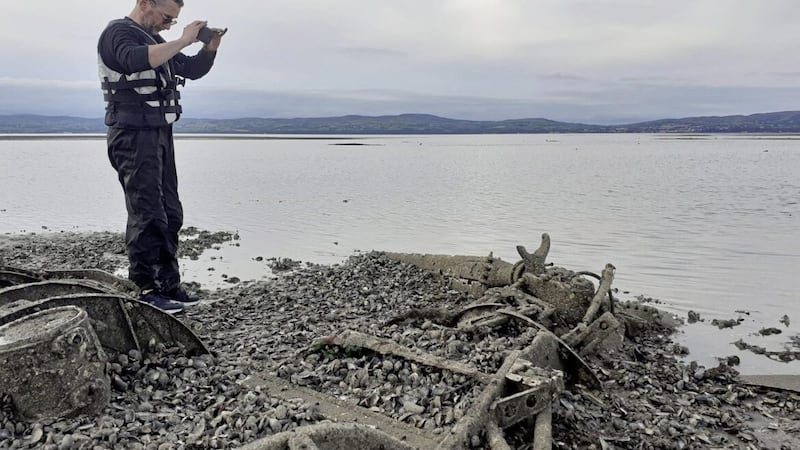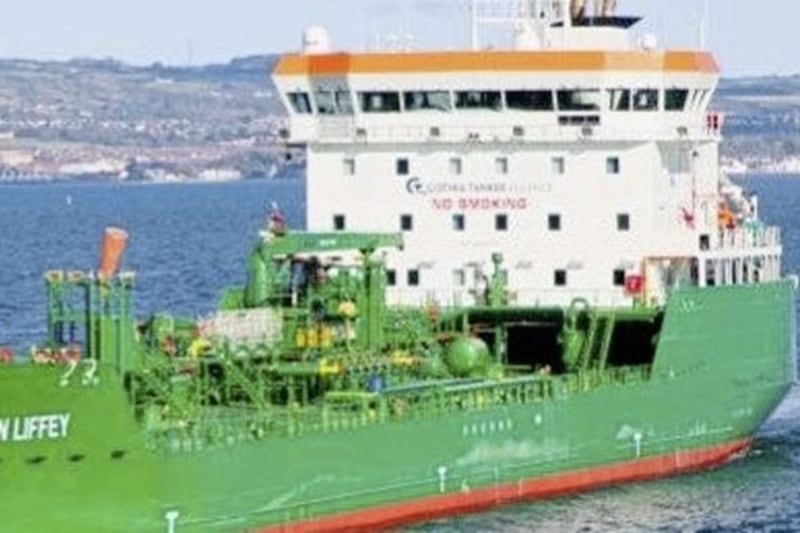AN aviation enthusiast has shed light on the mystery of a navy helicopter that crashed in Lough Foyle more than 60 years ago.
On November 25, 1958, a Royal Navy Dragonfly helicopter piloted by a ‘Tubby Meadowcroft’ set out from the Royal Naval Air Station Eglinton, which is now City of Derry Airport. A routine mission to recover wing parts from another aircraft near Magilligan quickly went south when a winch cable was cut without warning, causing the helicopter to lurch and crash into the shallow water.
Lost for 63 years, the wreckage has now been discovered in the mud by aerial photos during a coastal mapping survey by government officials.
While heavily corroded, the frame and the three rotor blades were largely intact, with the Royal Navy logo still visible on the tail section.
Ray Burrows is Chairman of the Ulster Aviation Society, who assisted with research that identified it as a 1955 Westland Dragonfly naval air-sea search and rescue helicopter.
“Luckily everyone on board survived, the pilot’s nickname was Tubby Meadowcroft who was very experienced. It was very much a close escape for them," he said.
With only the "bones of the helicopter" left in the mud, he said it was unlikely to be moved any time soon.
“Anything that comes out of the sea is basically a disaster to restore. You have to run fresh water and lemon juice over it for years to try and kill the salt. That would cost an awful lot of money.”
Officials from the Department of Environment have declined to release the exact location of the crash, as it is located on soft sediment and “a significant number” of potentially live Second World War and post-war ordnance.








